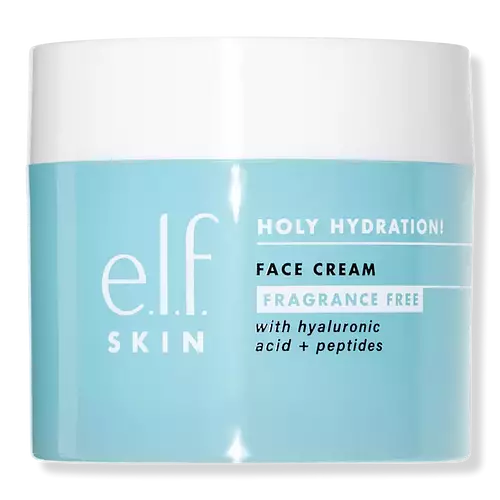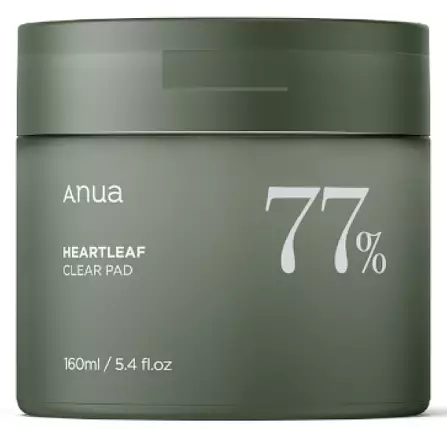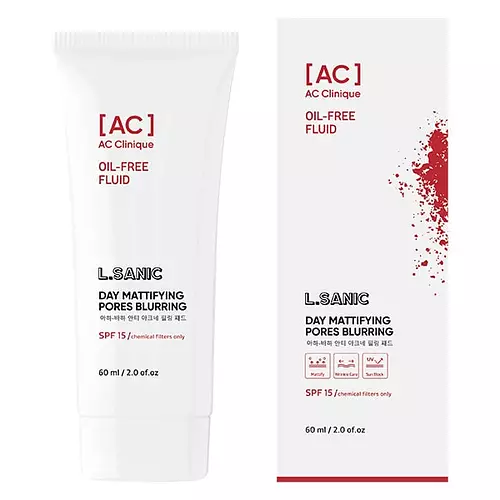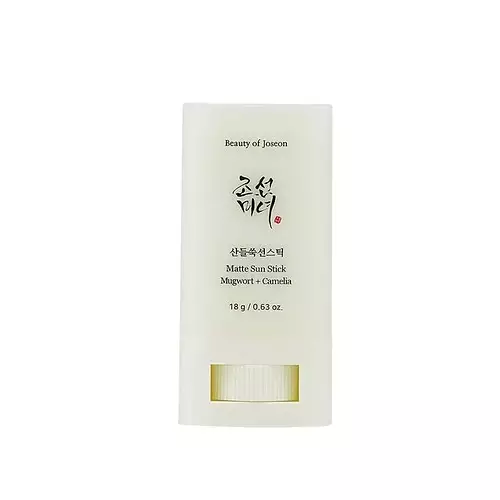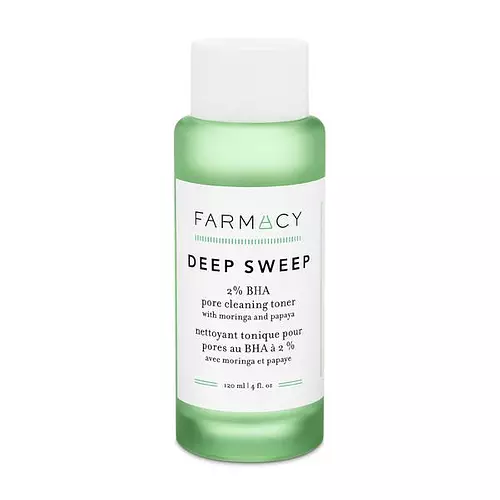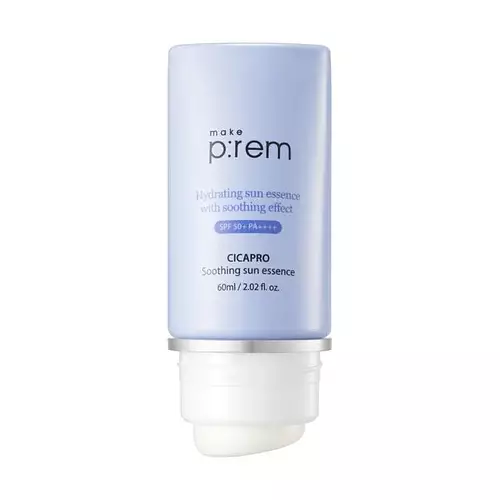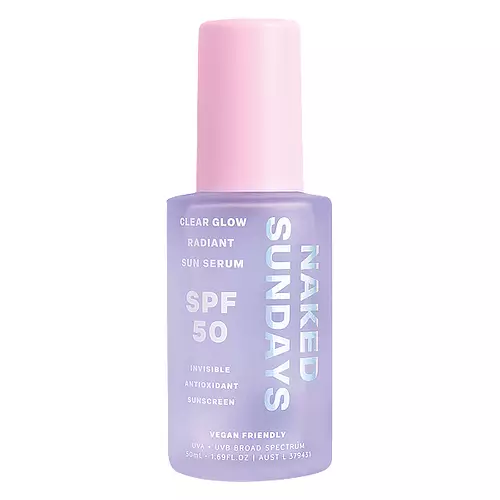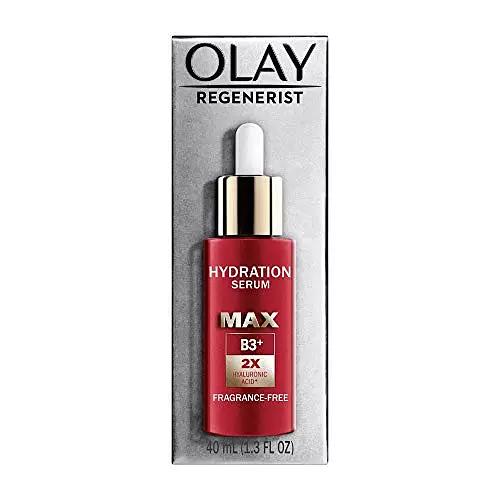e.l.f. cosmetics Holy Hydration! Face Cream - US Versus SKIN1004 Madagascar Centella Hyalu-Cica Water-Fit Sun Serum SPF50+ PA++++
Updated on January 10, 2024
Overview
What they are
These products are both vegan, cruelty-free, and reef safe . They have a total of 8 ingredients in common
Cool Features
They both contain hyaluronic acid and niacinamide
Suited For
They're both likely to be good for fighting acne, dry skin, brightening skin, sensitive skin, oily skin, reducing pores and dark spots
Free From
They both do not contain any common allergens, oils, parabens or sulfates
What's Inside
They both contain silicones
We independently verify ingredients, and our claims are backed by peer-reviewed research. Spot a product that needs an update? Let us know.
Ingredient Info
e.l.f. cosmetics Holy Hydration! Face Cream 32 ingredients
SKIN1004 Madagascar Centella Hyalu-Cica Water-Fit Sun Serum SPF50+ PA++++ 42 ingredients
At a glance
Click on any of the items below to learn more
e.l.f. cosmetics Holy Hydration! Face Cream 32 ingredients
SKIN1004 Madagascar Centella Hyalu-Cica Water-Fit Sun Serum SPF50+ PA++++ 42 ingredients
Notable Ingredients
This product contains 2 ingredients that may have this attribute:
This product contains 1 ingredient that may have this attribute:
This product contains 1 ingredient that may have this attribute:
This product contains 2 ingredients that may have this attribute:
Benefits
This product contains 1 ingredient that may have this attribute:
This product contains 1 ingredient that may have this attribute:
This product contains 1 ingredient that may have this attribute:
This product contains 1 ingredient that may have this attribute:
This product contains 1 ingredient that may have this attribute:
This product contains 1 ingredient that may have this attribute:
This product contains 2 ingredients that may have this attribute:
Concerns
This product contains 4 ingredients that may have this attribute:
This product contains 3 ingredients that may have this attribute:
This product contains 1 ingredient that may have this attribute:
This product contains 1 ingredient that may have this attribute:
Notable Ingredients
This product contains 4 ingredients that may have this attribute:
This product contains 1 ingredient that may have this attribute:
This product contains 1 ingredient that may have this attribute:
This product contains 1 ingredient that may have this attribute:
This product contains 3 ingredients that may have this attribute:
Benefits
This product contains 2 ingredients that may have this attribute:
This product contains 1 ingredient that may have this attribute:
This product contains 3 ingredients that may have this attribute:
This product contains 2 ingredients that may have this attribute:
This product contains 2 ingredients that may have this attribute:
This product contains 3 ingredients that may have this attribute:
This product contains 1 ingredient that may have this attribute:
This product contains 2 ingredients that may have this attribute:
This product contains 2 ingredients that may have this attribute:
This product contains 4 ingredients that may have this attribute:
Concerns
This product contains 1 ingredient that may have this attribute:
Ingredients Side-by-side
Ingredients Explained
These ingredients are found in both products.
Ingredients higher up in an ingredient list are typically present in a larger amount.
Water. It's the most common cosmetic ingredient of all. You'll usually see it at the top of ingredient lists, meaning that it makes up the largest part of the product.
So why is it so popular? Water most often acts as a solvent - this means that it helps dissolve other ingredients into the formulation.
You'll also recognize water as that liquid we all need to stay alive. If you see this, drink a glass of water. Stay hydrated!
Learn more about WaterGlycerin is already naturally found in your skin. It helps moisturize and protect your skin.
A study from 2016 found glycerin to be more effective as a humectant than AHAs and hyaluronic acid.
As a humectant, it helps the skin stay hydrated by pulling moisture to your skin. The low molecular weight of glycerin allows it to pull moisture into the deeper layers of your skin.
Hydrated skin improves your skin barrier; Your skin barrier helps protect against irritants and bacteria.
Glycerin has also been found to have antimicrobial and antiviral properties. Due to these properties, glycerin is often used in wound and burn treatments.
In cosmetics, glycerin is usually derived from plants such as soybean or palm. However, it can also be sourced from animals, such as tallow or animal fat.
This ingredient is organic, colorless, odorless, and non-toxic.
Glycerin is the name for this ingredient in American English. British English uses Glycerol/Glycerine.
Learn more about GlycerinButylene Glycol (or BG) is used within cosmetic products for a few different reasons:
- It is a solvent, meaning that it helps to dissolve other ingredients. This also enhances the absorption of the product into one's skin.
- It is a humectant, which means that it helps attract moisture into the skin.
- It helps improve product application.
Overall, Butylene Glycol is a safe and well-rounded ingredient. It is unlikely to irritate skin, and works well with pretty much all other ingredients.
Niacinamide has emerged as an all-star ingredient due to its many benefits.
It is known to treat acne by reducing inflammation. It also helps fade dark-spots and strengthen the skin by promoting the growth of the ceramide barrier.
Other benefits include smoothing wrinkles and minimizing redness.
The cherry on top? Niacinamide can also help build keratin, a protein that keeps skin firm.
When incorporating niacinamide into your routine, look out for concentration amounts. Typically, 5% niacinamide provides benefits such as fading dark spots. However, if you have sensitive skin, it is better to begin with a smaller concentration.
Niacinamide can be mixed with other ingredients to boost benefits. For instance, it has shown to be effective when used with copper, folic acid, and zinc to treat acne.
Learn more about NiacinamidePolymethylsilsesquioxane is a silicone used as a film forming agent.
When applied to the skin, this ingredient creates an invisible film on the surface. This film still allows oxygen to pass through, but prevents moisture from escaping. This can help condition and hydrate the skin. It also leaves a silky feel when applied.
Polymethylsilsesquioxane has not been shown to clog pores. It has been deemed safe to use up to 55%, but most cosmetics use much less.
If you have concerns about using this ingredient, we recommend speaking with a professional.
Learn more about PolymethylsilsesquioxaneSodium Hyaluronate is hyaluronic acid's salt form. It is commonly derived from the sodium salt of hyaluronic acid.
Like hyaluronic acid, it is great at holding water and acts as a humectant. This makes it a great skin hydrating ingredient.
Sodium Hyaluronate is naturally occurring in our bodies and is mostly found in eye fluid and joints.
These are some other common types of Hyaluronic Acid:
Learn more about Sodium HyaluronateEthylhexylglycerin (we can't pronounce this either) is commonly used as a preservative and skin softener. It is derived from glyceryl.
You might see Ethylhexylglycerin often paired with other preservatives such as phenoxyethanol. Ethylhexylglycerin has been found to increase the effectiveness of these other preservatives.
Carbomer is a polymer of acrylic acid. Its main role is to create gel consistency within products.
Carbomer is commonly found in many types of cosmetics products. It is found to be safe in concentrations up to 15%. However, a high amount of carbomer can cause pilling or balling up of products. Most products contain 1% of less of carbomer.
Ingredient Ratings
Here's what our community thinks of the ingredients in these products.
When to use
e.l.f. cosmetics Holy Hydration! Face Cream 32 ingredients
SKIN1004 Madagascar Centella Hyalu-Cica Water-Fit Sun Serum SPF50+ PA++++ 42 ingredients


Reviews
Here's what our community thinks
e.l.f. cosmetics Holy Hydration! Face Cream 32 ingredients
Aybab_207
You‘ll get pimples if you have oily- combo skin
Every time when I used this, I got pimples the other day. Fragrance ist too strong and doesn’t...
You‘ll get pimples if you have oily- combo skin
Every time when I used this, I got pimples the other day. Fragrance ist too strong and doesn’t hydrate much. I don’t recommend it.
YiShin
Did nothing for my skin (I have combo acne). It pills and does not help my acne or hydration. It lasts a long time for such a cheap price though....
Did nothing for my skin (I have combo acne). It pills and does not help my acne or hydration. It lasts a long time for such a cheap price though. Would NOT recommend or repurchase. The ingredients on skinsort show that the formula isn’t very good either.
SKIN1004 Madagascar Centella Hyalu-Cica Water-Fit Sun Serum SPF50+ PA++++ 42 ingredients
Lapaki
This chemical sunscreen has a modest dewy finish and leaves my skin feeling refreshed. The watery, lightweight lotion dries in under couple of...
This chemical sunscreen has a modest dewy finish and leaves my skin feeling refreshed. The watery, lightweight lotion dries in under couple of minutes. It doesn't leave any unwanted residue, no greasiness and no stickiness. Plus, there's no white cast, and it doesn't pill when I layer it with other products. Reapplying throughout the day is no issue, and when it's time to cleanse, it washes off effortlessly. However, I've noticed that during the summer months, its hydrating properties can be a bit too much, and therfore tends to make me sweat a bit more. Last but not least: it's cruelty-free, vegan, and reef-safe.
skinogre
Generally speaking I despise spfs. I hate having to put it on because it always makes me feel greasy, this spf still makes me feel that way...
Generally speaking I despise spfs. I hate having to put it on because it always makes me feel greasy, this spf still makes me feel that way sometimes but a lot less often and has not damaged my skin unless I leave it on without washing my face for 2 days, so it’s my favourite. Basically I’d say this spf is like being the tallest dwarf, it’s only triumph is the fact that it doesn’t break me out, damage my skin or hurt my eyes compared to the other spfs that I hate with all of my being
How I use it:
After all my serums I put this on as my final step, it’s used as a lotion instead of my isntree aqua gel and I only apply the spf on during the day. I try to use it everyday but honestly I probably use it 3/7 days as I’m indoors programming with blackout curtains (I KNOW I SHOULD STILL USE SPF REGARDLESS but I’m not a soldier) I use 3 pumps per day one for forehead, one for right cheek, chin plus nose, another one for left cheek, chin and nose. (I should reapply but that’s asking too much now)
Pros:
- no white cast and it rubs in seamlessly (and my skin is considerably dark Korean standards, so for no white cast to be showing is amazing)
- Hyaluronic acid makes it serve as my lotion
- Has never broke me out unless I keep it on my face without washing for 2 days. I’ll get like 1 pimple on my forehead or my cheek
- I love the squeeze pump function it has a very niche packaging and gentle aesthetic so I love getting it out
- Although it feels greasy for the first 30 mins, it dies down later throughout the day which unfortunately indicates that it’s time to reapply
- Doesn’t smell like drugstore sunscreen 🎉👏, just smells of nothing
- It won’t affect the natural glow of your skin. My skin still looks like it’s glowing and plump when I put this on, yet it feels dull so the texture paranoia is all in my head but others see glowing bright skin
Cons:
- I can literally feel a barrier layer from this spf that if I rub my skin hard, dried bits of the spf can come off, but that only happens when I intentionally rub fast
- Makes my skin feel glazed and oily like suffocating kind of but it’s still the least suffocating my skin has felt compared to other spfs
- Like all SPFs, I forget to wash my face in the evening and when I don’t wash my face after putting this on, I just feel gunky and dirty
- I also just feel like not washing my face in the evening whenever I have this on because it just feels so uninviting, I don’t know how to describe it as such. I think I may dislike the dull feeling it gives my skin so much that oil cleansing with this spf on feels like a duty rather than something I love
How long it lasts:
4 months, applied once a day for about 3-5 times a week. Please consider my infrequent application and lack of reapplication throughout the day, if used properly, I’d say perhaps 2 months and a few weeks is how long it would last
In conclusion, I still like this spf, I’m trying others after my second bottle finishes because I am determined to find a spf I LOVE and not just “settle” for. Also please take into consideration that this review is biased. Because I hate SPFs. I also have oily skin, stay indoors all day, forget to wash my face in the evenings sometimes and prefer to feel like I have a lovely warm glow to my skin, so if you’re not any of those it can make my review an outlier to all the wonderful things people say about this spf. I like this spf, my problem is that I just don’t love it.
